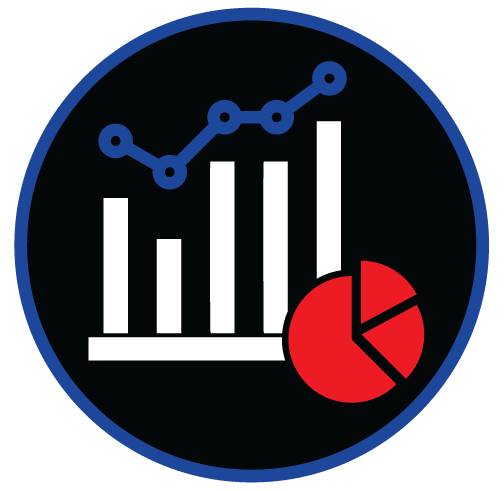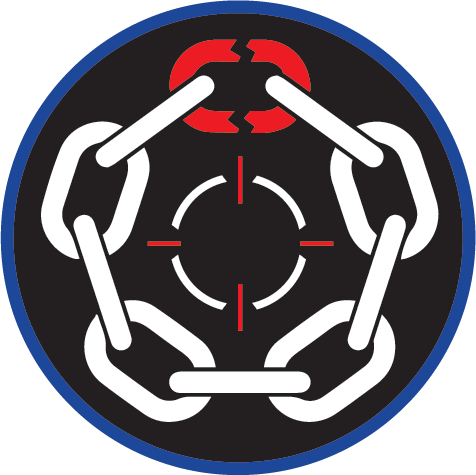
Subdomain Header Analysis
Hidden Dangers in Plain Sight: Securing Your Subdomains Through Header Inspection
Gain deep insights into the security posture of your subdomains with ThreatNG's Subdomain Intelligence module. This powerful tool performs comprehensive analysis across three key areas: Subdomain Header Security Analysis to identify missing or insecure headers, Subdomain Outdated Header Detection to flag the use of deprecated headers, and Subdomain Technology Discovery to reveal underlying server technologies. By pinpointing potential vulnerabilities and outdated configurations, ThreatNG empowers you to proactively strengthen your subdomain security and protect your organization from web-based attacks.
Header Security Analysis
Secure Your Subdomains: The Critical Role of Header Analysis
Subdomain header security analysis is a vital component of a comprehensive web security strategy. By meticulously examining the HTTP response headers of your subdomains, you can uncover hidden vulnerabilities and misconfigurations that leave your organization exposed to attacks. This analysis helps identify weaknesses in security measures designed to prevent threats like Cross-Site Scripting (XSS), clickjacking, and data injection, ensuring a robust defense against web-based attacks.
Identify Missing Security Headers: Discover subdomains lacking essential headers like Content-Security-Policy, X-Frame-Options, and others that protect against common web attacks.
Uncover Misconfigured Headers: Detect headers that are present but improperly configured, potentially leaving your subdomains vulnerable.
Strengthen Your Security Posture: Proactively address header security gaps to bolster your defenses and protect users interacting with your subdomains.
Outdated Header Detection
Don't Get Caught Outdated: Spotting Legacy Headers in Your Subdomains
While implementing security headers is crucial, ensuring they're up-to-date is equally important. Subdomain outdated header detection scans your subdomains for the presence of deprecated HTTP response headers. These outdated headers may offer limited protection or even introduce vulnerabilities, undermining your security efforts. By identifying and replacing them with modern alternatives, you maintain a strong security posture and ensure optimal protection against evolving web threats.
Detect Deprecated Headers: Identify the use of outdated headers like X-XSS-Protection and Feature-Policy that have been superseded by more effective security mechanisms.
Reduce Security Risks: Eliminate potential vulnerabilities associated with older headers that may be exploited by attackers.
Improve Compliance: Ensure adherence to current web security standards and best practices by keeping your header implementations up-to-date.
Technology Header Discovery
Know Your Web Terrain: Unveiling Server Technologies Across Your Subdomains
Subdomain technology discovery provides valuable intelligence about the software powering your web presence. By identifying the specific web servers and versions running on each subdomain, you gain crucial insights for vulnerability assessment, security prioritization, and informed decision-making. This knowledge empowers you to proactively address potential weaknesses and tailor your security measures to the specific technologies deployed across your subdomains.
Pinpoint Web Server Technologies: Identify the specific web server software (e.g., Apache, Nginx, IIS) running on each subdomain.
Uncover Server Versions: Determine the precise versions of web server software in use, enabling targeted vulnerability assessments.
Prioritize Security Efforts: Focus security resources on subdomains running older or more vulnerable server software versions.

The Hidden Language of Subdomains: Using Header Analysis for Proactive Security and Risk Management
Subdomains often represent an overlooked attack surface, hiding potential risks that can impact various aspects of cybersecurity. Leveraging subdomain intelligence, including header security analysis, outdated header detection, and technology discovery, provides a comprehensive approach to strengthening your security posture, protecting your brand, and making informed decisions. From managing your external attack surface to conducting due diligence and mitigating digital risks, subdomain intelligence offers valuable insights and empowers proactive defense across a range of critical areas.
EASM
Identify Unknown Subdomains: Discover forgotten or shadow IT subdomains that may pose security risks.
Prioritize Remediation Efforts: Focus on subdomains with missing security headers, outdated configurations, or vulnerable server technologies.
Reduce Attack Surface: Minimize potential entry points for attackers by proactively addressing vulnerabilities across all subdomains.
Digital Risk Protection
Uncovering Hidden Attack Infrastructure: Analyzing headers can reveal connections between seemingly unrelated subdomains, potentially exposing hidden attack infrastructure or command-and-control servers used by malicious actors.
Identifying Vulnerable Subdomains: By analyzing security headers, you can identify subdomains lacking essential protections like HSTS or CSP, making them more susceptible to attacks and data breaches. This allows you to prioritize remediation efforts.

Brand Protection
Prevent Website Defacement: Identify and secure vulnerable subdomains that could be hijacked by attackers to display malicious content.
Unmask Imposters: Detect inconsistencies in subdomain headers, such as mismatched locations or unexpected technologies, that could reveal brand impersonation attempts.
Maintain Customer Trust: Demonstrate a commitment to online security by proactively addressing vulnerabilities across all subdomains.
Due Diligence
Assess Security Hygiene: Evaluate the overall security posture of an organization by examining the configuration of its subdomains.
Uncover Hidden Risks: Identify potential vulnerabilities that could lead to data breaches, operational disruptions, or financial losses.
Make Informed Decisions: Gain a comprehensive understanding of an organization's security practices to support informed investment or partnership decisions.
Third-Party Risk Management
Evaluate Vendor Security: Assess the security practices of third-party vendors by analyzing the configuration of their subdomains.
Identify Potential Supply Chain Risks: Uncover vulnerabilities in third-party subdomains that could compromise sensitive data or disrupt business operations.
Enforce Security Standards: Ensure that third-party vendors meet security requirements by monitoring the configuration of their subdomains.

Uncover Hidden Threats and Secure Your Digital Assets with Comprehensive Subdomain Investigation
Subdomains are often overlooked, yet they represent a significant portion of your organization's attack surface. Failing to understand and secure your subdomains can leave you vulnerable to a wide range of threats, from data breaches to brand damage. ThreatNG's Subdomain Intelligence provides the capabilities you need to gain complete visibility into your subdomain landscape and proactively mitigate risks. Our comprehensive suite of capabilities allows you to:
Cloud Hosting
Discover and analyze your subdomains, revealing their hosting locations across various cloud providers to identify potential security gaps and manage third-party risks.
Infrastructure Exposure
Gain complete visibility and protect critical assets. Identify, assess, and secure all your subdomains, including uncovering hidden infrastructure through custom port scanning.
Redirects
Uncover potentially malicious or unintended redirects, ensuring user safety and proper security hardening.
Content Identification
It helps organizations prioritize security efforts by automatically categorizing subdomains based on content, allowing for a proactive approach to vulnerability management and asset protection.
Known Vulnerabilities
Identifies and prioritizes known vulnerabilities based on their severity and potential impact, allowing organizations to address critical threats and strengthen their security posture proactively.
Takeover Susceptibility
Prevent subdomain takeover attacks by identifying vulnerable subdomains, scoring their susceptibility, and continuously monitoring for changes.
Reconnaissance
Analyzes subdomains' HTTP responses, categorizing them to reveal potential security risks and help prioritize security efforts.
WAF Identification
Analyzes the web application firewalls protecting your websites, revealing their strengths, weaknesses, and potential bypasses to enhance security assessments.


















